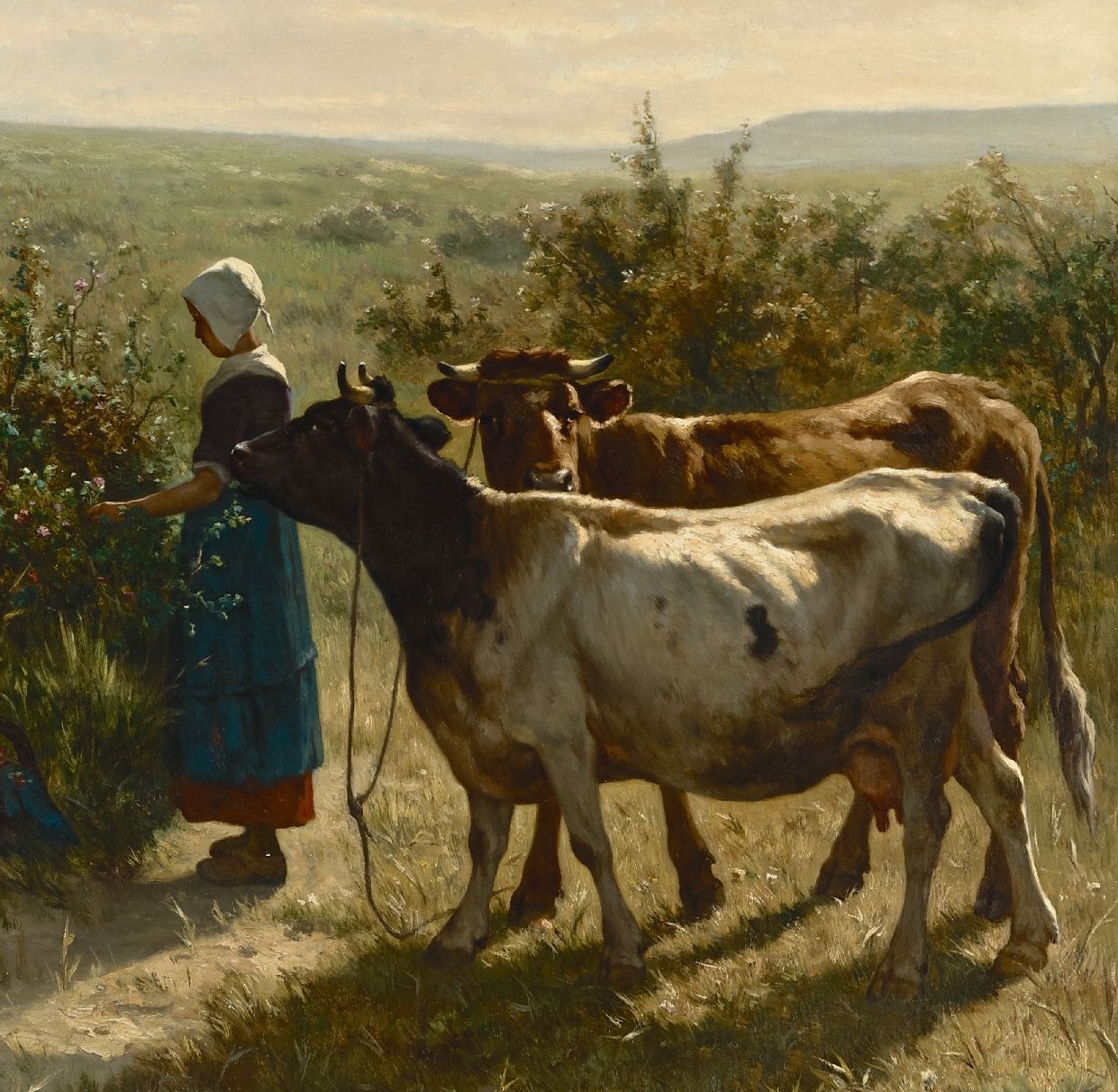Cattle (domestic)
| Detail | Cow | Bull |
|---|---|---|
| Species | bovine | |
| No. Appearing | 20-200 | 2-5 |
| Behaviour | herd | |
| Range | rural | |
| Size | 5 ft. at shoulder | 5½ ft. at shoulder |
| Weight | 1,000 lbs. | 1,330 lbs. |
| Intelligence | 1 | 2 |
| Armour Class | 7 | 6 |
| Hit Dice | 3 | 4+1 |
| Action Points | 5 | 5 |
| Max. Stride | 11 | 14 |
| THAC0 | 19 | 18 |
| Hp/Die | d4+d6 | d12 |
| Attack Forms | 2: horns | |
| Damage | horn (1-6) | horn (1-8) |
| Natural Abilities | incidental damage, stampede, trampling | charging, incidental damage, trampling |
Domestic cattle trace their ancestry back to auroch cattle, which were initially domesticated approximately 7,500 years ago in the southern Caucasus and northern Mesopotamia. Since then, these selectively bred cattle have expanded their presence to every continent, adapting to diverse climates worldwide. Through selective breeding, much of the natural aggressiveness has been bred out of domestic cattle, making them generally indifferent to humans as long as they are not provoked. However, many bulls still retain a potential for aggression.
Medieval cows were significantly smaller than contemporary beef cattle breeds, typically weighing around 500 pounds. They had a relatively compact and stout body shape with shorter legs compared to modern cattle. This body structure allowed them to graze efficiently in the rough and often hilly terrain of medieval Europe. Further, medieval cows possessed prominent horns, which varied in shape and size, curving or extending outward from the animal's body, increasing the risk of injury to farmers.
Cows
On a typical farm, dairy cows are usually brought in from the pasture for milking in the evenings and then returned to the field after their morning milking session. In contrast, beef cows may be allowed to spend the night on fenced-in pastures. They generally prefer to move along quietly; herders employ various methods to keep cattle moving, including vocal calls, gentle tapping or guiding them from horseback.
Cattle spend a significant part of their day grazing and resting. When driven too forcefully or aggressively, they can become "nervous" and easily startled by loud noises or sudden movements. During long cattle drives, precautions are taken to maintain their calm and allow them time to relax. If cornered, individual cattle stand and fight, but groups of cattle always stampede.
Stampede. If cattle in a group are threatened, they begin moving rapidly and uncontrollably in a panicked state, posing a serious risks to both the animals involved and any humans or structures in their path. As a body, these animals can wreck wagons, small buildings, trees and anything else in their way. A character in their path would be attacked by 2-5 horns per round, while sustaining an additional 1-10 points of incidental damage — and if stunned, would be trampled for an additional 2-12 damage.
Bulls
Bulls are known for their increased muscularity and aggression compared to cows, making them integral in beef ranching, dairy farming and cultural activities like bullfighting. They possess a large, bony head with protective ridges over their eyes, and their horns are thicker and shorter than those of cows, curving outward in a flat arc rather than upward in a lyre-like shape.
Handling bulls requires careful attention, as when they become angered, they tend to lower their heads and charge. A bull won't stand and fight. Instead, it prefers to move off to a distance of 9-12 hexes, so it can charge again.
Charging. When a bull charges, it receives a +2 bonus to hit and +1 additional damage with each striking horn. Creatures in close proximity to the charging bull are susceptible to incidental damage. Those who become stunned by a bull are forced to the ground by the bull's weight, where they suffer 2-8 additional trampling damage.
See also,
Animal Husbandry (technology)
Bestiary
Oxgoading (sage ability)
